Blastula
“Many embryos come to be transformed from a solid round of cells (frequently called a morula) right into a hollow ball of cells called a blastula”.
From One Cell to Blastocyst
An organism develops from a single cell called a zygote, which arises from an ovum (egg) being fertilized by a single spermatozoan (sperm). The cell is surrounded by a solid membrane layer of glycoproteins called the zona pellucida which the successful sperm has actually taken care of to pass through.
The zygote undertakes cleavage, increasing the number of cells within the zona pellucida. After the 8-cell stage, embryos undergo what is called compaction, where the cells bind tightly to each other, forming a compact ball.
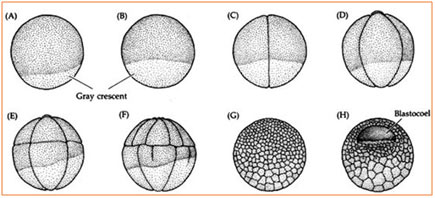
After compaction, the embryo is in the morula phase (16 cells). Cavitation takes place next; where the outer layer of cells (the trophoblast) secretes water right into the morula. Consequently, when the number of cells reaches 40 to 150, a central, fluid-filled cavity (blastocoel) has been formed.
The zona pellucida begins to deteriorate, permitting the embryo to increase its volume. This phase in the establishing embryo, reached after four to six days, is the blastocyst (related to the blastula phase) and lasts about until the implantation in the uterus.
Types of Blastula
The blastula of various groups of animals varies in kind and structure relying on a range of factors such as the dimension, amount as well as distribution of yolk, etc. The following groups of blastulae have been acknowledged in various groups of animals.
1. Coeloblastula
It is a hollow blastula having a huge spacious blastocoel. Typically, the blastocoel is full of a liquid consisting of mucopolysaccharides.
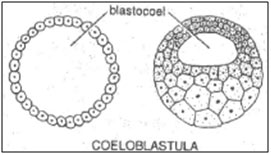
- Equal coeloblastula
The blastula resulting from holoblastic equal cleavage is called equal coeloblastula. For example, in echinoderms and amphioxus. In this instance, the blastoderm is single-layered.
- Unequal coeloblastula
Holoblastic unequal cleavage, as in frogs, causes unequal coeloblastula. It has a blastocoel displaced in the direction of the animal pole and a multilayered blastoderm.
2. Stereoblastula
This kind of blastula is composed of an aggregate of a bigger sized and reasonably lesser number of cells without or with a very small blastocoelic space in the center.
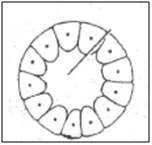
Stereoblastula occurs in a range of animals such as insects, some worms like Nereis, mollusks like Cripidula, Gymnophiona, amphibians, and certain fishes.
3. Disco blastula
Disco blastula consists of a disc-shaped mass of blastomeres overlying a large yolk mass. This blastula is the result of meroblastic discoidal cleavage as in many fishes, reptiles, and birds.
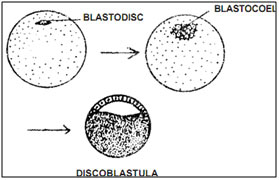
There is no blastocoel, instead, a slit-like cavity called sub germinal cavity appears in between the blastoderm and the yolk mass.
4. Peri blastula
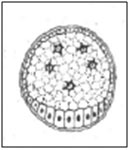
It is a stage in the embryonic development of most arthropods having centrolecithal eggs. The peri blastula is a vesicle whose wall consists of one layer of cells and whose cavity is full of unbroken yolk. It develops as a result of the surface segmentation of the egg.
Blastocyst Differentiation:
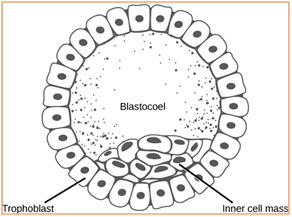
- The blastocyst is characterized by a group of cells, called the inner cell mass (also called embryoblast) and the pointed-out trophoblast (the external cells).
- The internal cell mass gives rise to the embryo, the amnion, yolk sac, and allantois, while the trophoblast will eventually develop the placenta.
- The blastocyst can be thought of as a sphere of a layer of trophoblast cells, with the inner cell mass connected to this sphere’s inner wall surface.
- The embryo plus its membrane layers are called the conceptus.
- By this phase, the conceptus is in the uterus. The zona pellucida ultimately disappears totally, enabling the blastocyst to invade the endometrium, executing implantation.
